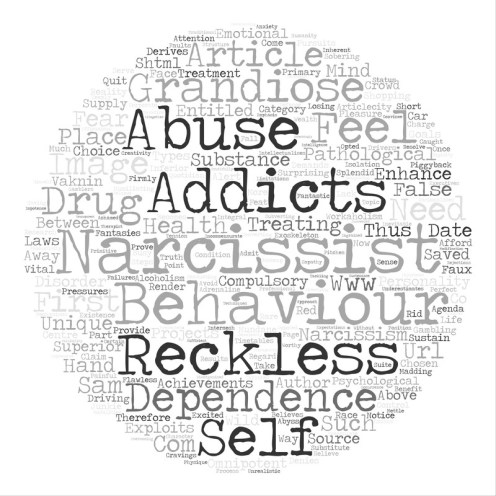
In the past week my attention has been drawn to a useful essay https://www.academia.edu/37932680/The_Lawful_Argument_for_the_Disestablishment_of_the_Church_of_England on the topic of disestablishment of the Church of England. The author, Richard Conway, a lawyer, is suggesting that the current safeguarding crisis in the Church of England is so serious that it brings into question the arrangements by which the Church is established and allowed to enjoy much legal independence. In short, the Church needs to lose some of these legal privileges to allow outside bodies to oversee its safeguarding. For me, the interest of the paper is not this issue of disestablishment. It is the way that Conway sets out clearly the overall state of play over safeguarding in the Church, including a brief summary of Gilo’s story and the Elliot report that followed it. A second point, of even greater value for me, is the fascinating section on the culture of the Church. Although Conway is addressing problems in the Church of England, his comments could equally be said to apply to the Catholic Church, particularly after the IICSA hearing on Thursday 13 December. The culture of protecting the institution,doubting and challenging the evidence of survivors and generally impeding the pursuit of justice, is an issue for both the major churches in this country. But, returning to the Church of England and Conway’s paper, the claim is made strongly that the Church of England, based on its past record, is incapable of managing safeguarding on its own without outside help.
I want to look at some of the observations that Conway makes with regard to the Church of England culture. These overlap with themes that this blog has tried to explore in the past. We have frequently mentioned the instinctive desire to protect the institution against perceived attacks from the outside. This may take the form of covering up incidences of abuse, not recognising them for what they are and failing to report them to the secular authorities. Some church members will typically question the credibility of survivors and victims as well ‘degradate these individuals in favour of the alleged abusers’.
What Conway adds to the discussion beyond these observations,is an attempt to explain this defensive stance in psychological/sociological terms. The paper refers to an article published in 2017 in ‘Child Abuse Review’. This supports the hypothesis that church people have typically a tendency to be sceptical in the face of the claims of survivors. The paper then intriguingly goes on to speak of a ‘narcissistic identification’ with the church and speaks about‘selves, merged to the religious institution’.
Speaking of ‘narcissistic identification’ may make the paper a little technical for the general reader. Here, however, what is being explained is of great importance on the theme of abuse in churches, so I thought it would be worth trying to unpack this language to see what is being said about why church people are not good at treating survivors well. From bishops downwards, many church people still find it hard to welcome survivors and listen to them with the dignity and respect they deserve.
The expression ‘narcissistic identification’ takes us back to a branch of psychoanalytical theory which came into being through the writings of one Heinz Kohut in the 70s in the States. I have tried to wade through his dense prose,but the outlines of his theory are reasonably clear. Every human being has to construct a sense of self in childhood. This is accomplished through a gradual process of separation from parents. The close psychological merger with the protecting figures of infancy gives way to independence and autonomy. This is the process of establishing a secure self which has the ability to cope with the normal stresses of life and relationships. Unfortunately, the path towards securing a solid sense of self is sometimes met with set-backs, maybe caused by parental neglect or trauma. In the place of a secure self, the child and later adult has a weakened identity. They are, according to the classic Kohutian model, ‘narcissistically wounded’,though the levels of its severity will vary enormously. Their recourse is to seek ‘self-objects’, entities(people or things) with which they can merge to relieve the emptiness that exists inside them. The need to ‘feed’ their emptiness by a variety of strategies, will sometimes involve controlling groups of other people. Narcissistic behaviour will normally be a trait of cult leaders who are manipulating their followers in ways that that meet their emotional neediness of the leader. Narcissistic neediness may also be found among the followers of a religious/political leader. He/she provides a powerful but flawed role model with which to identify, again fulfilling the role of a ‘self-object’. The dynamics of many churches, particularly those of a charismatic style, can be interpreted by recourse to this narcissistic model.
When Conway speaks about a ‘narcissistic identification’ on the part of church members, he appears to be saying that the church institution has become a ‘self-object’, a part of the ‘self ’of its members so that one can speak of a narcissistic merger with it. To put it another way, the sense of self/identity has become bound up seamlessly with their membership of the church. There is probably nothing surprising or unusual in this, except when it becomes an impediment to clear vision and the just treatment of abuse survivors.
Richard Conway is familiar with Gilo’s story and he knows the extraordinary way that several bishops completely failed to ‘recollect’ the moment they were told about Gilo’s encounters with his abuser. The same institutional narcissism seems to beat work as when people within congregations cannot bear to hear any ill of people who have become part of their identity in a narcissistic way. To attack my hero, the one on whom I have identified some key parts of my identity, is to attack me.
The explanation of the way that narcissistic processes are at work in the failure of some congregations and church leaders to support victims and believe their stories is an important insight in our attempt to understand the Church’s failures in this area. It will always be dangerous to internalise the idea that the individual is below the organisation. Not only does the notion fail justice, as we have seen happen in both Catholic and Anglican churches, but it also destroys and undermines integrity and honesty, both corporate and individual.








